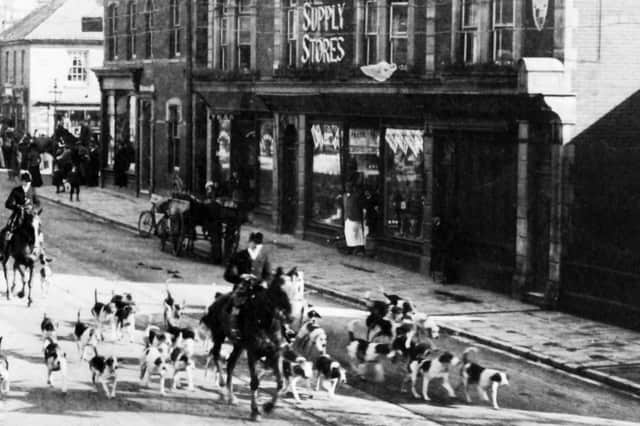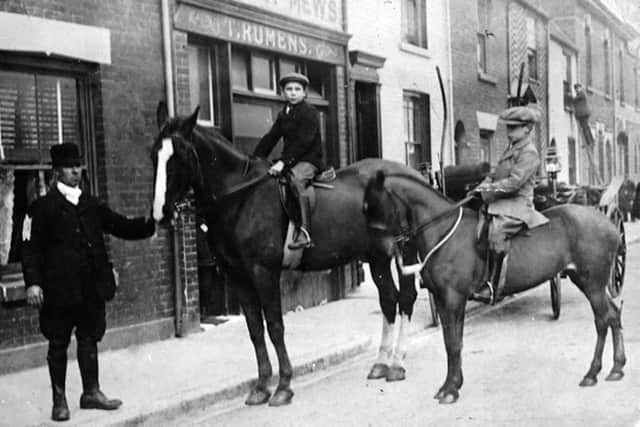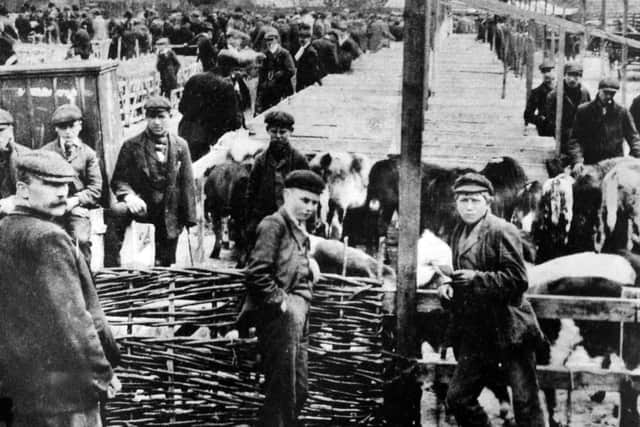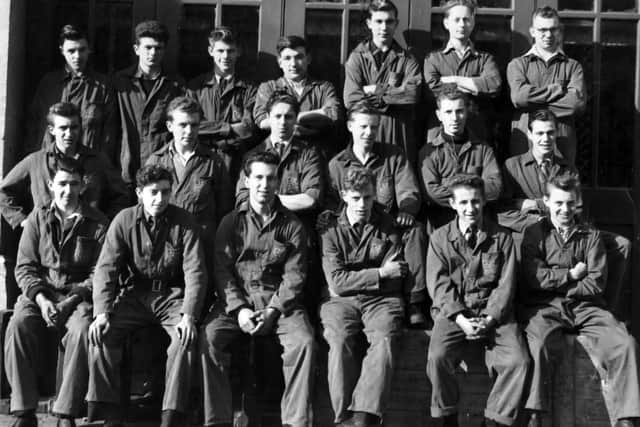Imagine the hunt charging through Waterlooville today '“ Nostalgia


A pre-1935 scene looking along London Road, Waterlooville, shows hounds from the Hambledon Hunt running through the town.
I wonder if the huntsman is Captain Paul Vivian who, during the Second World War, was torpedoed in his armed merchant cruiser HMS Laurentic.
Advertisement
Hide AdAdvertisement
Hide AdHe was rescued and later became the commander of Stockheath Naval Camp, Leigh Park. There he kept the hounds in kennels and horses in stables and hunted with them. On the left, more horses are emerging from Hambledon Road.


'¢ I recently published a photo of a horse-drawn public carriage owned by Thomas Rumens and further information about him comes from Brian Clifford who says Thomas made his business a family affair.
He had four sons: Thomas William (1897); Ernest Edward (1898); Horace Robert (1901), and Stanley (1908).
And of this picture, Brian says: 'I would not think there is an age gap of four years between the two boys, so possibly these are Ernest and Horace.'
Advertisement
Hide AdAdvertisement
Hide AdHe adds: '˜Ernest Edward Rumens was operating as a jobmaster at 9 All Saints' Street, Landport, as late as 1927.' Â


'¢ Although called a cattle market, most towns had an animal market selling cattle, sheep, pigs, chickens and other fowl.
This photograph shows Fareham market after 1920 when the animals were placed in stalls to stop them escaping. They were usually driven into town along the lanes and roads mostly from the north. They were originally paraded in West Street in front of the old fire station but there were complaints about the chaos.
A market company, founded at the end of the 19th century by Austin & Wyatt, bought land which became the market place. From the market, the sold animals were sent to the railway station to be taken to their new farms or to the abattoir in Portsmouth. Local butchers could also slaughter animals in the back of their premises.Â
Advertisement
Hide AdAdvertisement
Hide AdOver time the farm animals were sent to covered markets and Fareham sold chickens, rabbits, geese and ducks and later flowers, fruit, vegetables, clothes and household utensils. It later became just a general market.


'¢Â The final picture comes from Mike Simpson (third from the left in the front row) of apprentice mechanics, body shop trainees and electricians in 1957 at Gordon Motors, Cosham. It later became  Hendy Lennox.
Mike remembers some names, can anyone tell me the rest? Back row, second left, is Bill Rumbold, fifth left Norman Cox and sixth Mike Conniston. First on the left front row is Johnny Hawke and far right is Charlie Gordon.
Â